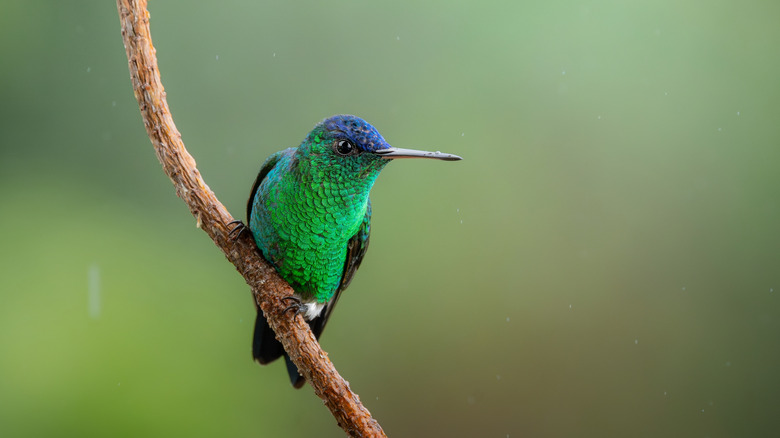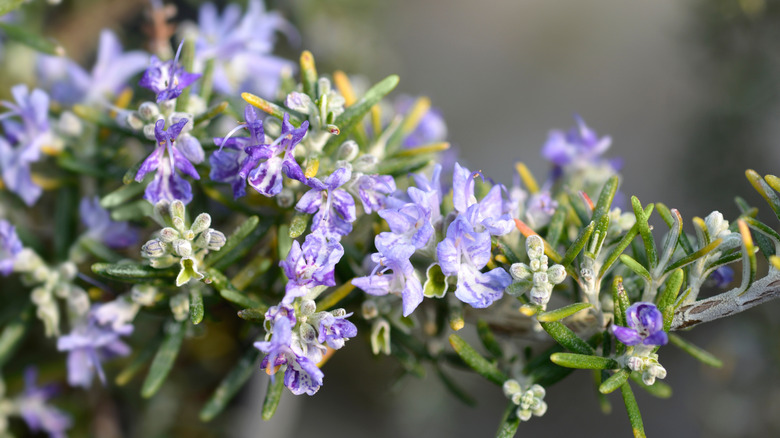The Pale Blue-Blooming Ground Cover Hummingbirds Will Flock To In Your Yard
Attracting hummingbirds to your yard doesn't have to be a massive investment of time or energy. While hummingbirds will flock to nest-building plants in your garden, they really want food to fuel their huge energy needs. These tiny birds have evolved their long beaks to drink sugar water, called nectar, out of tubular flowers. Since they use sight, not smell, to locate their next meal, it's important to know that color and shape are more important than a sweet aroma. Though hummingbirds do prefer shades of bright red and orange, they have been known to visit other colors of tubular flowers as well. Unless you're looking to plant your entire garden with a fiery color pallet, it's easier to grow a variety of promising nectar-providing flowers.
One unexpected hummingbird pleaser is creeping rosemary (Rosmarinus officinalis prostrata). As a groundcover with pale blue to light purple flowers, it is not often the first pick to attract hummingbirds to your garden. However, they provide the right flower shape, making them a good supporting plant. While you should pair these shrubby evergreen plants with more attractive pollinator flowers, they can make excellent border partners and can spill over walls for an elegant cottage look. As with most pollinator plants, it's good to plant in groups of three or more to keep nectar sources concentrated. Hummingbirds also seek out big groups of flowers, so opt for patches rather than scattering individual flowers around the yard.
Adding creeping rosemary to your garden
Most states will have at least one of the 17 species of hummingbirds that nest in the U.S., so there must be some adaptability on their part when it comes to choosing flowers. Creeping rosemary may also have to adapt to your yard since it is originally a Mediterranean plant. With an affinity for poor, well-draining soil, it's an excellent solution for a sandy patch in which other flowers may struggle. However, if you live in colder zones or have soil that stays consistently wet, you may want to avoid root rot and freezing by planting creeping rosemary in containers. It's worth noting that rosemary can be notoriously difficult to keep indoors over winter.
Even if you have to grow it as an annual every year, this lovely groundcover can be a great addition to a pollinator garden. Hummingbirds will keep coming back for a yard with plenty of nectar-producing flowers, and creeping rosemary attracts them and other pollinators. As a bonus, American goldfinches seem to like their seeds and deer avoid its scent, which makes creeping rosemary a cottagecore crowdpleaser.

